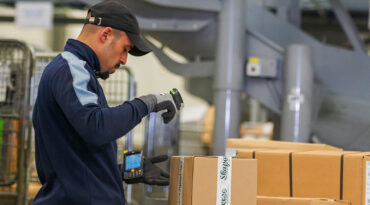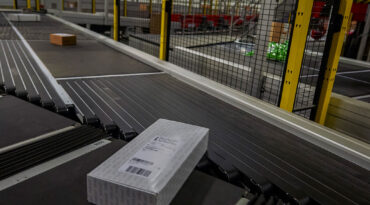By BEUMER Group
We talked with the Executive Director for Digital Transformation at Croatian Post, Krešimir Radošević, about how Croatian Post has used digitalisation and the development of digital tools to streamline its sortation processes, drive efficiency and generate income.
Digitalisation as an essential development strategy
Croatian Post’s ‘Post 2022 Development Strategy’ is founded on two core philosophies: digitalisation and corporate social responsibility. For Croatian Post, says Radošević, digitisation is critical in transforming an otherwise “old industry” into one today that is relevant and better equipped to deal with constant innovations and changes. He says:
“The world has become digitalised and CEP businesses need to adapt to this world to ensure they are relevant in the future.”
But what is digitalisation to Croatian Post?
According to Radošević, digitalisation needs to be treated more as a discipline where data is the asset. Digitalisation and effective data use needs to occur at three main points, he says:
“Being able to identify our clients, the surface areas or addresses in which we operate and knowing as much as possible about our parcels.”
If Croatian Post is able to obtain quality data at all three junctures, says Radošević, with disciplined and measurable efforts, its digital efforts will come together to achieve the accumulative best results.
Croatian Post discovers a missing link
In implementing its digital strategy, says Radošević, Croatian Post discovered that the end customer was a missing key component in many digitalisation efforts. He explains:
“As digitalisation strategies are often targeted at webshops and suppliers, CEP businesses have little insight into their end customer. And while delivery solutions such as parcel lockers may solve a certain problem, they can also take CEP businesses even further away from their clients.”
Yet as the last contact, this touch point is extremely valuable to any CEP company. It became apparent to Croatian Post, says Radošević, that the problem was reaching the customer.
Reaching the end customer and creating value
Radošević says that the solution had to be about empowering the customer by providing transparency. This meant not only informing customers about what is happening to their parcels every step of the way, but also putting an end to getting customers to do the work. As Radošević comments:
“Asking customers for their parcel numbers, for example, should not be necessary today when CEP companies already have that data available.”
The solution therefore seemed rather simple: connect data from Croatian Post’s systems (such as its sorting machines and camera technology) with its customers. Indeed, continues Radošević, why not create a customer portal through which it could show its customers their parcel journeys, thereby creating value for both the customer and the company?
Croatian Post had to find ways to incentivise its customer to pay for the transparency, while ensuring it was actually able to provide it.
Using system data to connect with end customers
In order to connect its parcel handling processes with its end customers, Radošević says, Croatian Post worked on enabling its systems to create micro transactions with its customers. In other words, where, when and how their parcels would be delivered could be changed at any time.
Croatian Post had learned that creating small communication opportunities, such as mobile text messages, actually provides a very limited window for customer flexibility which can end up being incredibly frustrating for the customer.
Radošević explains:
“We saw an opportunity to make parcel delivery modifications ‘on the fly’. Creating more junctions within the process created greater windows in which customers could upgrade their shipments, at a small cost. But these junctions had to be communication points (where data is being used, such as scanning equipment) that are also capable of communicating with our handlers who could then redirect the parcel’s course.”
By providing customers with transparency and more communication opportunities through digitalisation, Croatian Post is now able to provide an improved quality of service and has created the chance to make revenue. And the costs to digitalise, Radošević assures, are offset by ensuring the data is taking care of quality service.
Intercepting problems through digitalisation
But digitising the process not only provided Croatian Post the chance to improve its customer service. As it came to better understand the data and improve its quality, says Radošević, it also realised it could use it to optimise its sorting processes. He says:
“Where traditionally we could only learn of delivery problems when customers complained – and by that point, we could only minimise the damage – with data use, we found we can now start intercepting and solving problems before they even reach the customer.”
Using its data, Croatian Post can effectively calculate how long a parcel typically takes to travel within its premises from one state to another – from the sorting machine, manual sorting or damaged shipments section and so on. Radošević says that the data now has the capabilities of:
- Alerting floor managers that certain parcels haven’t transited to the states they were supposed to;
- Raise an instant notification;
- Set off an investigation; and
- Help to preemptively resolve the problem.
It is important for Croatia Post that it can give its customers the greatest choice and flexibility in their parcel deliveries. But this does mean moving away from printed forms to digital ways of communicating, says Radošević. Through data, Croatian Post has been able to increase juncture points and its customer service. Says Radošević:
“We’re opened our process to our customers and created greater opportunities to upsell our services.”




